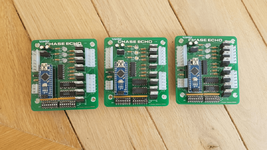Being on lockdown has meant a lot more time for pinball related projects, which is great, but it's also meant that some projects have to be sidelined until the right trade to opens up again. My creech rebuild, which is 95% done, has to wait until the powdercoater down the road opens back up again. While creech waits patiently for a sexy lockdown bar and leg combo, my attention has drifted onto other projects, like learning about the Arduino.
I only became aware of these things recently, when doing some research into building a Afterglow Nano. I had no idea what they were or what they did, but they looked like a device that could offer a really accessible way into microcontroller programming. I already knew how to code in C so it looked promising, but surely I would have to get dirty with address buses and crazy sh*t like that?
Fast forward a week or two and I was made aware of a new creech chase board that had been released. Looked fantastic, with loads of selectable patterns on a newly designed PCB. Seemed like it had a few drawbacks though (outside of the 200 quid price tag) - it wasn't specifically aimed at LEDs and so LEDOCD like fading was none existant.
So, I thought I'd have a crack at it myself.
Some of you may have seen the first attempt I posted a week or so ago. Since then I've managed to
* Get the Arduino to respond to chase on/off pulses from the live machine
* Coded sine, cosine and bell curve algos to manage the PWM fading and spin functionality (forward/reverse)
* Written 12 patterns that send different variables into the algos to achieve different lighting and spin fx
* Tested the breadboard on the bench and in the live machine
* Built out the PCB
Here are the patterns doing their thing on the bench (inc. loud child ambient background noise)
Here's v1 the PCB. Still a few changes to make like DIP switch selectable patterns, random/linear pattern selection. Oh and testing. :-/
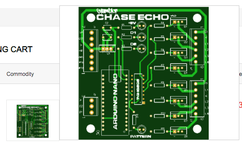
Hoping to sell these a bit further down the track so if interested let me know.
I only became aware of these things recently, when doing some research into building a Afterglow Nano. I had no idea what they were or what they did, but they looked like a device that could offer a really accessible way into microcontroller programming. I already knew how to code in C so it looked promising, but surely I would have to get dirty with address buses and crazy sh*t like that?
Fast forward a week or two and I was made aware of a new creech chase board that had been released. Looked fantastic, with loads of selectable patterns on a newly designed PCB. Seemed like it had a few drawbacks though (outside of the 200 quid price tag) - it wasn't specifically aimed at LEDs and so LEDOCD like fading was none existant.
So, I thought I'd have a crack at it myself.
Some of you may have seen the first attempt I posted a week or so ago. Since then I've managed to
* Get the Arduino to respond to chase on/off pulses from the live machine
* Coded sine, cosine and bell curve algos to manage the PWM fading and spin functionality (forward/reverse)
* Written 12 patterns that send different variables into the algos to achieve different lighting and spin fx
* Tested the breadboard on the bench and in the live machine
* Built out the PCB
Here are the patterns doing their thing on the bench (inc. loud child ambient background noise)
Here's v1 the PCB. Still a few changes to make like DIP switch selectable patterns, random/linear pattern selection. Oh and testing. :-/

Hoping to sell these a bit further down the track so if interested let me know.

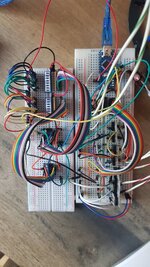
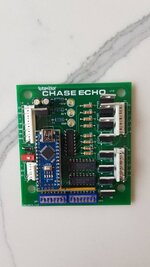
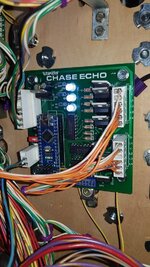
 awesome work mate, love it
awesome work mate, love it